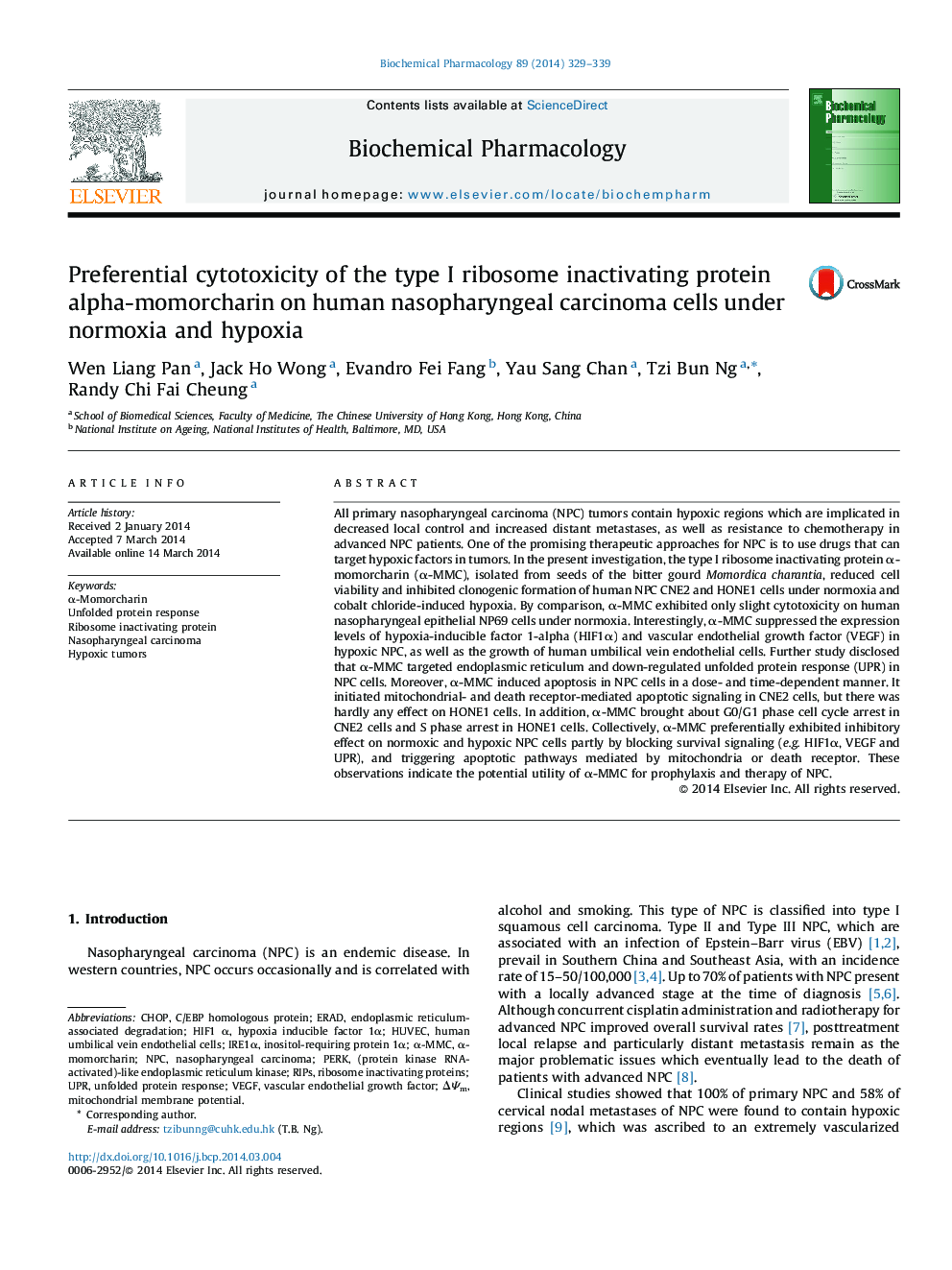| کد مقاله | کد نشریه | سال انتشار | مقاله انگلیسی | نسخه تمام متن |
|---|---|---|---|---|
| 2512216 | 1118328 | 2014 | 11 صفحه PDF | دانلود رایگان |

All primary nasopharyngeal carcinoma (NPC) tumors contain hypoxic regions which are implicated in decreased local control and increased distant metastases, as well as resistance to chemotherapy in advanced NPC patients. One of the promising therapeutic approaches for NPC is to use drugs that can target hypoxic factors in tumors. In the present investigation, the type I ribosome inactivating protein α-momorcharin (α-MMC), isolated from seeds of the bitter gourd Momordica charantia, reduced cell viability and inhibited clonogenic formation of human NPC CNE2 and HONE1 cells under normoxia and cobalt chloride-induced hypoxia. By comparison, α-MMC exhibited only slight cytotoxicity on human nasopharyngeal epithelial NP69 cells under normoxia. Interestingly, α-MMC suppressed the expression levels of hypoxia-inducible factor 1-alpha (HIF1α) and vascular endothelial growth factor (VEGF) in hypoxic NPC, as well as the growth of human umbilical vein endothelial cells. Further study disclosed that α-MMC targeted endoplasmic reticulum and down-regulated unfolded protein response (UPR) in NPC cells. Moreover, α-MMC induced apoptosis in NPC cells in a dose- and time-dependent manner. It initiated mitochondrial- and death receptor-mediated apoptotic signaling in CNE2 cells, but there was hardly any effect on HONE1 cells. In addition, α-MMC brought about G0/G1 phase cell cycle arrest in CNE2 cells and S phase arrest in HONE1 cells. Collectively, α-MMC preferentially exhibited inhibitory effect on normoxic and hypoxic NPC cells partly by blocking survival signaling (e.g. HIF1α, VEGF and UPR), and triggering apoptotic pathways mediated by mitochondria or death receptor. These observations indicate the potential utility of α-MMC for prophylaxis and therapy of NPC.
Figure optionsDownload as PowerPoint slide
Journal: Biochemical Pharmacology - Volume 89, Issue 3, 1 June 2014, Pages 329–339